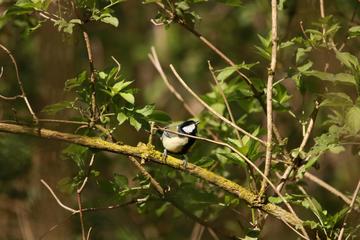
Photocredit: Keith McMahon
On 27 April 1947, the first Great Tit egg of the year was counted in the University of Oxford's 'living laboratory' at Wytham Woods. Seventy-five years later, in 2022, the year’s first Great Tit egg was counted on 28 March; almost exactly a month earlier than its predecessor from 75 years ago.
The Wytham Great Tit study is the longest continuous study of an individually-marked animal population in the world. It plays a key role in scientists’ understanding of how populations change in response to the environment – particularly how they are coping with changing climates.
Sir David Attenborough said: ‘I am delighted to hear of the 75th anniversary of the long-term Great Tit study in Wytham Woods. Having visited several times, I know how fundamental this study, and others like it, have been for our understanding of the impacts of climate change on the natural world.
‘Long-term studies like this require long-term commitment, and I wish the study – and its practitioners – a long and productive future.’
The Wytham Woods Great Tit study is led by Professor Ben Sheldon, Department of Zoology. Read more about this story at ox.ac.uk.
Wytham Woods is a Site of Special Scientific Interest to the west of Oxford and has long played an important role in research in the social sciences. Current research projects, programmes and activities across the Social Sciences Division which take place at Wytham Woods include:
- The Ecosystems Laboratory at The Environmental Change Institute, led by Professor Yadvinder Malhi, which conducts active research at Wytham Woods, alongside tropical forests and savannas around the world.
- The Oxford Resilient Buildings and Landscapes lab (OxRBL), led by Professor Heather Viles, Associate Head (Research) Social Sciences Division and Professor of Biogeomorphology and Heritage Conservation, which has a field test site at the woods.
- The Anagama kilns, built by Dr Robin Alexander Wilson, Anthropologist, together with expert potters from Japan, and artists from Whichford Pottery.
- Regular smelting and ceramic kiln work at the woods run by Dr Victoria Sainsbury and The Research Laboratory for Archaeology and the History of Art.